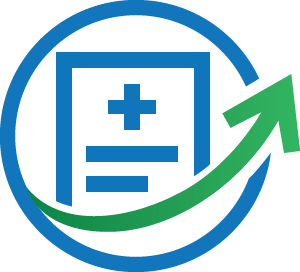Is faxing finally over?
ScriptSender’s answer:
The signs are all there. It’s front and center in new healthcare legislation. It’s emphasized by countless speakers in medical conferences. It’s a prime development focus for I.T. Interoperability is the key to modernizing healthcare in the 21st century.
Interoperability simply means making information available, when and where it’s needed. As radiology is predicated on collaboration—sharing results with referring providers, and ideally receiving full patient data from those providers to aid diagnosis—barriers to that workflow directly impact care delivery.
Though everyone is hopping on the interoperability bandwagon, the imaging industry is largely stuck on the most outdated form of sharing information: faxing. Clearly all that paper slows communication—think of the missing pages, the voicemails back and forth, the illegible artifacts—but there is a good reason why faxing is still around. It’s because the alternatives have been too expensive, and too difficult.
Take HL7. The idea is to have two disparate systems “talk” to each other and exchange data without reams of paper.
But getting those separate systems to sync up is expensive and time-consuming. It can take months for dedicated I.T. specialists to get an HL7 integration to work, and then it’s time to start over with the next referrer’s system. Few imaging providers are robust enough to spend resources—financial or technical—on HL7 set-ups, let alone on continued maintenance.
“We actually capture the real postscript data from that print and insert the data directly into their RIS. It is far more than fax replacement. That is the very smallest part of what we do. It is information sharing, interoperability, integration in seconds—with any EMR, RIS, or PACS.”
“We actually capture the real postscript data from that print and insert the data directly into their RIS. It is far more than fax replacement. That is the very smallest part of what we do. It is information sharing, interoperability, integration in seconds—with any EMR, RIS, or PACS.”
Even after time and money are invested in an HL7 set-up, not all clinical documents can be transmitted. Back to the fax machine for those. Real interoperability has to be simpler, faster, and consistent.
After too many experiences seeing stranded data block referrals, Chris Craft, a former CIO of a large imaging practice in New England, created a new method of integrating with referrers—one that was so easy that it could be done in a single click.
Craft is now the founder and CEO of ScriptSender, which enables referrers to transmit any document, from any system, directly to an imaging center in seconds—without any special interface. Referrers activate ScriptSender with a simple point-and-click in a web browser—and then can use the print command from any application to send any document from that point forward. That includes notes, lab reports, a whole patient folder, anything.
Best of all, the information is transmitted as live data, not a .pdf or image file, directly into the imaging center’s RIS or EHR.
“When we talk to attendees at RSNA, or any other trade show, there is always this aha moment when they realize we aren’t just a pdf printer that allows a referring physician to print a referral to them,” said Craft. “We actually capture the real postscript data from that print and insert the data directly into their RIS. It is far more than fax replacement. That is the very smallest part of what we do. It is information sharing, interoperability, integration in seconds—with any EMR, RIS, or PACS.”
Consider this: CMS Administrator Seema Verma recently announced initiatives to make every clinical setting a “Fax-Free Zone.” ScriptSender does more than replace fax. It takes imaging into true interoperability.


